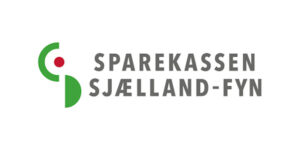Ifølge finanshuset Pimco er der stadig betydelige risici på oliemarkederne, og det skyldes primært de geopolitiske spændingerb i og omkring Iran, Irak og Libyen.
Uddrag fra Pimco:
Tensions in the Middle East and North Africa have once again brought geopolitical risks to the forefront of oil markets.
Below, we discuss three hot spots we are monitoring. These areas of greatest concern today tilt primarily to upside risk to prices, particularly with an easing of U.S.–China trade tensions.
Iran: While at the time of this writing fears of escalation between Iran and the U.S. have diminished based on statements from U.S. President Donald Trump and Iranian Foreign Minister Mohammad Javad Zarif, it is hard for us to send an all-clear signal. Under the current U.S. administration, the tension between the U.S. and Iran has been steadily increasing over the past few years. U.S. sanctions have brought significant pain to the Iranian economy, leading Iran to respond by attacking American allies in the region. While there have been bouts of hope over the past few years that a détente would be in the offing, neither side appears willing to acquiesce to the demands of the other. Tensions at the beginning of this year followed the U.S. withdrawal from the Iran nuclear deal, formally the Joint Comprehensive Plan of Action (JCPOA), in 2018, and Iran gradually reducing its compliance with limitations on its nuclear program agreed to under the JCPOA (though Iran still has not increased processing purity to a more concerning 20% and still allows International Atomic Energy Agency inspections and collaboration). Indeed, the U.S. and Iran remain far apart on a variety of issues, and sanctions on Iranian oil exports will likely remain. In summary, the overarching reasons for concerns have not changed from a few weeks ago, and recent events might foreshadow something worse yet to come, though we hope not. This is even more problematic in the situation where production or exports from neighboring countries are impacted, given limited spare oil production or export capacity outside the Middle East.
Iraq: Even before the events of January, the political situation in Iraq could be at best described as problematic. While Iraq has managed to maintain and grow oil output despite political instability and constraints on water resources in past years, recent protests, a caretaker government, and Iraq serving as a proxy for Iran/U.S. tensions create uncertainty about future output and stability. While we view the imposition of U.S. sanctions on Iraq as improbable, the failure to renew a waiver for natural gas imports from Iran could create problems with producing electricity ahead of summer in Iraq, which historically has added to political uncertainty.
North Africa: One of the most important and least-discussed oil market risks in our estimation is Libya, where discussions of a cease-fire between rival factions are currently underway. While output is at post-Gaddafi highs, recent heated fighting between the two competing governments and the failure so far of the international community to successfully mediate the conflict bode poorly for output stability. If anything, the deepening involvement of other nations – supplying money, arms, and combatants – in the conflict likely exacerbates the problem rather than ameliorating it. Another regional concern, albeit not quite as kinetic, is the power transition in Algeria. While we aren’t expecting armed conflict, the political uncertainty at the very least could continue to deprive the nation of investment needed to sustain output.








